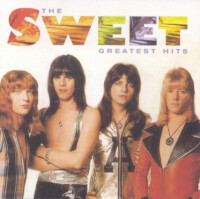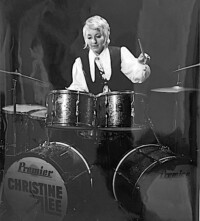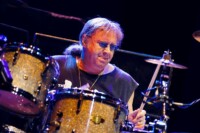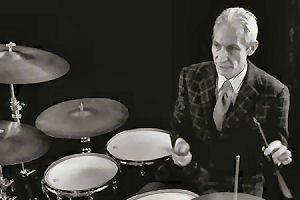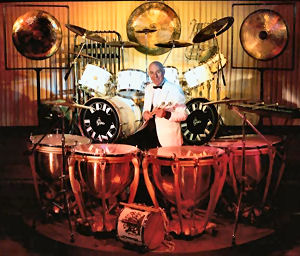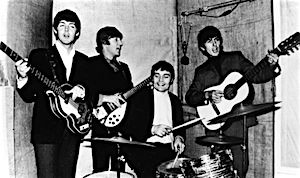 I decided to write about Jimmie Nicol without realising that I may have made a rod for my own back, since there’s not a great deal of really pertinent information around about him and frankly some of it is confusing and some is unbelievable. So you (and I) will have to rely on my not-quite-so-infallible memory. I’m fortunate in that I can remember the sixties, although certainly not what I had for breakfast this morning!
I decided to write about Jimmie Nicol without realising that I may have made a rod for my own back, since there’s not a great deal of really pertinent information around about him and frankly some of it is confusing and some is unbelievable. So you (and I) will have to rely on my not-quite-so-infallible memory. I’m fortunate in that I can remember the sixties, although certainly not what I had for breakfast this morning!
I’ve written about both the original Beatle’s drummers Pete Best and Ringo Starr in the dim and distant past, but this is my first crack at the third, and patently the most anonymous.
But, I can categorically tell you that a drummer called Jimmie Nicol was definitely one of the Beatles from June 4th 1964 until June 14th, 1964 after which time he came home from gigs in Australia – all on his own. He remains unique in the Beatles pantheon for the fact that his tenure lasted just eight days. He actually he played five gigs in the land-down-under in Adelaide and Melbourne after gigs in Denmark, The Netherlands and Hong Kong.
What caused this momentous event to transpire was nothing to do with Ringo having a difference of musical opinion with the rest of the ‘Fab 4’, although he did once have one of these since (well-founded rumour has it) he left the group for a few days in 1968 and stories abound about Paul McCartney playing drums on tracks on ‘The White Album’. No, what actually happened was that in mid-1964 on the eve of what was billed as The Beatles’ Australasian tour, Ringo became so ill he had to be hospitalised. This was at the beginning of June 1964 just as the band was about to set out on what was called their first world tour. He handled the gig admirably and then just as quickly vanished when Ringo returned to the fold to do a gig in Sydney followed by several more in New Zealand.
So who exactly was Jimmie (aka Jimmy) Nicol and how did this impossible dream happen?
Well to begin at the beginning he was born on August 3rd, 1939 and as it happens he was an accomplished drummer with a ‘proper’ playing career before the Beatles phoned him and woke him up one lunch time asking him if he fancied deputising for Ringo in the antipodes?
It was the eve of their departure for what is described as their first world tour when Ringo actually collapsed from tonsillitis and was rushed to hospital. The internet tells me “these were the days before illness clauses in the contract could postpone a bunch of gigs due to sickness”. In those days the show-biz adage was that: “the show must go on” and that was the issue which the principals debated. George Martin and Brian Epstein both felt they should continue with a stand-in drummer until Ritchie was discharged and he could catch up with the rest of the Beatles wherever they were.
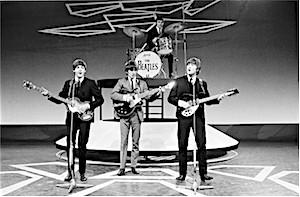 After all they were only playing ten songs each night to screaming fans, no longer including “I Wanna Be Your Man” which Ringo always sang – so how difficult could it be?
After all they were only playing ten songs each night to screaming fans, no longer including “I Wanna Be Your Man” which Ringo always sang – so how difficult could it be?
Well even though the intelligent money said they should still do the gig and not disappoint the fans, George Harrison didn’t agree and dug his heels in saying if Ringo wasn’t going, neither was he. They managed to placate him and the search was on in earnest for a competent drummer.
The story becomes somewhat hazy here because one report says Jimmie wasn’t the first drummer they called. Raye du Val, who played with Emil Ford and The Checkmates, was allegedly their first choice to deputise, followed by Bobby Graham – but neither of them were available.
Jimmie Nicol was available though, more than competent and highly recommended as a substitute by none other than George Martin who had used him recently on a record with a Liverpudlian singer named Tommy Quickly and was confident he would be able to handle the gig. And, even more fortuitously, Jimmie had been a session drummer whose playing had been used to produce “Top Six Records” which were extended-play records similar to the budget-labelled ‘Embassy’ records sold in Woolworths and less-salubrious record shops. These had a group composed of session players performing songs they were gambling on already being big hits by the original artists by the time they were available in ‘Woolies’. The point being you could buy six full-length tunes on these EP’s for the price of one regular single with an ‘A’ side and a ‘B’ side. Less-discerning fans, who did not recognise the difference, and the important fact that these were not the real groups, would enthusiastically buy the records. This went on for several months until the general public became wise to what was going on.
I’m told those Beatles-related ‘Top Six’ recordings of John, George, Paul and Ringo’s songs actually did get into the “Hit Parade″ sales-wise which was unheard of. Not that this would make any difference to Jimmy who was working as a session man and at the end of the three hour session would receive a brown envelope containing the equivalent of £5.75. But, the point is, since it was Jimmie Nicol playing drums on these records, it shows he was no stranger to the Beatles work and therefore the perfect replacement for the ailing Richard Starkey.
As I said Jimmie Nicol was a proper, schooled musician who started out in a school choir, moved on to play drums in the Boy’s Brigade, followed by more drums and xylophone in the Army Cadet Corps. An educated guess says he had had drum lessons at one time because he could handle session work, live shows, and could play rock ‘n’ roll, and, perhaps more surprisingly he was adept at “Big Band Music”. And unlike the Beatles, Jimmie could read music. Perhaps it puts him into further perspective to discover his heroes were Phil Seamen and Cannonball Adderly.
His CV, had we had that sort of thing in those days, would have read that he was discovered in London’s 2I’s coffee bar by Larry Parnes (who was a Svengali-like figure in the fifties not undeservedly known as ‘Mr Parnes, shillings and pence’) who discovered and changed the names of embryonic and important British rockers like Tommy Steele, Billy Fury, Marty Wilde, Lance Fortune, Duffy Power, Johnny Gentle, Terry Dene, Nelson Keene, Georgie Fame and Vince Eager.
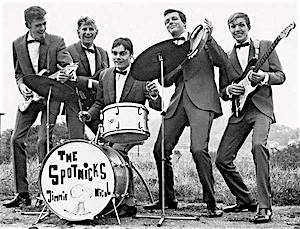 Jimmie Nicol frequently worked with the last two artists on the list and also played with Tommy Steele’s brother, Colin Hicks. I’m pretty sure he’d been in the Merchant Navy so naturally his band were called the Cabin Boys. Incidentally, they later changed their name to ‘Nero and the Gladiators’ who even though they were hampered by wearing Ancient Roman fighting uniforms had, I feel, an extremely influential impact on the subsequent British music scene!
Jimmie Nicol frequently worked with the last two artists on the list and also played with Tommy Steele’s brother, Colin Hicks. I’m pretty sure he’d been in the Merchant Navy so naturally his band were called the Cabin Boys. Incidentally, they later changed their name to ‘Nero and the Gladiators’ who even though they were hampered by wearing Ancient Roman fighting uniforms had, I feel, an extremely influential impact on the subsequent British music scene!
Jimmie took a break from mainstream rock ‘n’ roll after this, playing as part of the original pit band for Lionel Bart’s musical “Fings Ain’t What They Used T’be” at the Theatre Royal Stratford. After this he went back with Hicks”s band in time for their appearance in a 1958 Italian film documentary Europa Di Notte, which broke them in Italy and consequently allowed them to tour there extensively.
This mythical CV would have shown that before the beginning of the sixties he was what they used to call ‘legitimate’ when he played with Oscar Rabin and Cyril Stapleton who fronted hugely popular dance bands. The internet intimates he also worked with musicians from the prestigious Ted Heath and Johnny Dankworth Orchestras but I have no information as to whether he actually played with those eminent ensembles. He was kept in regular work through Charlie Katz, a well-known session fixer during that period. All of us guys playing sessions wanted Charlie as a friend!
The imaginary career resumé would also show that he worked as a drum repairer with Boosey and Hawkes who made brass and woodwind instruments as well as Ajax, and eventually a British version of Rogers drums.
In early 1964 he was playing with a group he formed with the Merseybeats’ ex-bass player called the ‘Shubdubs’ which was modelled on Georgie Fame’s highly successful R & B band: The Blue Flames. Other notable members of The Shubdubs were vocalist Tony Allen and a chap called Roger Coulam on organ who went on to form ‘Blue Mink’. Not long after this he received that fateful telephone call from The Beatles’ producer George Martin.
So as I said, what made him even more suitable for the Beatles’ gig was the fact that Jimmie Nicol knew their songs by heart from that Top Six work. Eventually, the die was cast and everybody was happy after a brief audition at Abbey Road studios. He was doing the gig and was made to look every inch a Beatle. Confusingly a wardrobe lady, instead of a hairdresser, is said to have come in and given him the regulation Beatle haircut So, that was it, he was in the most famous band on the planet – and the latest fifth Beatle.
Dougie Millings, who was the tailor to the Beatles and many other stars, obviously didn’t have time to run up a made-to-measure Tonik suit with a black collar, so Jimmie evidently wore Ringo’s with strategically-placed clothes pegs pinching the excess fabric at the back of the jacket to make it fit. The flat-fronted trousers didn’t fit either but that was hardly an issue since Jimmy was sitting down at the back and trousers hanging at half-mast were unlikely to be seen. History doesn’t tell us what he wore on his feet. But, it would have been just a short step (pun intended) for someone to rush around to Anello and Davide’s shoe shop in London’s West End to pick him up a pair of off-the-peg Beatle boots.
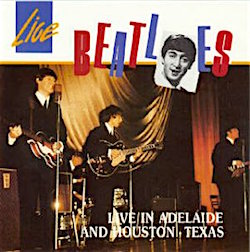 According to one extravagant internet account, Jimmie’s pay was £2,500 per show, with a £2,500 signing on fee. This was a more than tidy sum in those days when highly-paid stock-brokers took home in excess of £50,000 each and every year. I have to admit I’m sceptical. What I know of it makes that substantial sum more than twice as much as any top of the bill sixties solo singing star (like the one I worked with) was earning for live performances in those days. So I’m of the opinion that the £500 Eppy handed over after the gig in Melbourne along with the gold ‘Eterna-matic’ watch inscribed: ”From The Beatles and Brian Epstein to Jimmy – with appreciation and gratitude.” was more likely to be closer to the truth.
According to one extravagant internet account, Jimmie’s pay was £2,500 per show, with a £2,500 signing on fee. This was a more than tidy sum in those days when highly-paid stock-brokers took home in excess of £50,000 each and every year. I have to admit I’m sceptical. What I know of it makes that substantial sum more than twice as much as any top of the bill sixties solo singing star (like the one I worked with) was earning for live performances in those days. So I’m of the opinion that the £500 Eppy handed over after the gig in Melbourne along with the gold ‘Eterna-matic’ watch inscribed: ”From The Beatles and Brian Epstein to Jimmy – with appreciation and gratitude.” was more likely to be closer to the truth.
However, whatever he earned on June 4th, 1964, Jimmy Nicol sat behind Ringo”s Ludwig drum kit wearing Ringo’s suit, and was playing as a Beatle in the KB Hallen in Copenhagen, Denmark. It transpires that 24 hours earlier, he did not even have a suitcase or a passport. He would fill in for eight shows, playing just the ten songs on the set list, until the return of Ringo Starr on June 14, in time for the rest of the gigs in Australia and New Zealand.
As Nicol”s brief tenure progressed, Paul McCartney, who realised the intense pressure he was under would ask him how it was going. His response would be “It”s Getting Better”. This may well have been the inspiration for the tune from the ‘Sgt. Pepper”s Lonely Hearts Club Band’ album a few short years later in 1967.
Jimmie was described by one author who interviewed him as “a very proud, independent person”. Optimistically he had hoped that the boost provided by playing with the Beatles would lead him to better and bigger things than before his ‘Mop-Top’ tenure behind Ringo’s Ludwig drums. The aftermath of the experience, however was completely different. Within nine months he was made bankrupt, divorced, and actually suspected to be dead by people he’d worked with before. The gig itself may not have been the most difficult to cope with, but the recovery from it certainly was. There’s a very tellingly poignant photograph of him sitting completely alone in the Melbourne airport departure lounge contemplating his future.
Immediately after what should have been his Damascene moment, Jimmie Nicol came back to his own band for a couple more years. The band though had been re- named: Jimmie Nicol and The Shubdubs.
His next venture took him around the world with a Swedish instrumental group called The Spotnicks who, for a gimmick, played on stage in Space-Suits. Of course any success he had with them paled in comparison to his Beatles experience. That gig ended a few years later when he fell from his drum kit in Mexico, a direct result of the effects of drug abuse, seemingly altered for the worse by his short taste of being a temporary Beatle – does any of that story sound familiar?
He graduated to playing with a duo called Peter and Gordon and almost unbelievably with the Dave Clark 5 for a season in Blackpool before playing with Georgie Fame. But again none of this could bear a candle to his short stint with the Beatles.
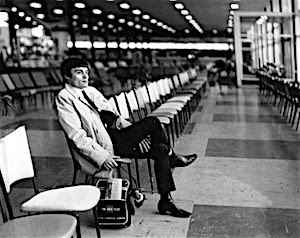 He parted company with the Spotnicks in 1967 and spent quite some time in Mexico starting a new life studying Samba and Bossa-nova rhythms whilst also expanding into business. I distinctly remember he was promoted in Mexico as ‘El Cinco Beatle’ (pronounced Be-art-ler) and he recorded there as well as playing gigs. One report says he turned down the gig with Duke Ellington because it meant moving to America.
He parted company with the Spotnicks in 1967 and spent quite some time in Mexico starting a new life studying Samba and Bossa-nova rhythms whilst also expanding into business. I distinctly remember he was promoted in Mexico as ‘El Cinco Beatle’ (pronounced Be-art-ler) and he recorded there as well as playing gigs. One report says he turned down the gig with Duke Ellington because it meant moving to America.
It wasn’t until 1975 that he returned to England and became involved with housing renovations. In 1988 it was rumoured that he had died, but an article in 2005 in a national newspaper which was searching said that he was still alive and living in London, and coincidentally his son Howard had become a successful Sound Engineer who won a Bafta Award by his work on The Beatles’ Anthology project.
I’m led to believe that in a fit of anger Jimmie Nicol deliberately smashed the engraved gold watch the Beatles had given him in Australia, blaming their manager Brian Epstein for somehow blacklisting him. Jimmie”s second wife Julia said in an interview that the drummer felt: “Epstein had always tried to ruin his solo career.” And that “this bitterness has apparently remained over the years”.
Strangely Jimmie never tried to seek fame and fortune from his almost unbelievable story about has time in the spotlight with the greatest band on the planet. It seems Jimmie even passed up a chance to be interviewed in the Anthology project, which was the group’s accounting of the Beatles” story which one has to assume made a lot of money for everyone involved – including Pete Best.
So he’s not dead although he seems to have left the music business in 1967. What happened to Jimmie (aka Jimmy) Nicol may well be a salutary lesson that you have to be careful what you wish for and frankly, how many of us could have coped with the aftermath of having being a Beatle for eight days?
After the event, George Martin later paid tribute to Jimmie Nicol whilst acknowledging the problems he experienced in trying to re-adjust to the vestiges of a normal life again: “Jimmie Nicol was a very good drummer who came along and learnt Ringo”s parts very well. He did the job excellently, and faded into obscurity immediately afterwards.” Paul McCartney commented that : ”It wasn”t an easy thing for Jimmy to stand in for Ringo, and have all that fame thrust upon him. And the minute his tenure was over, he wasn”t famous anymore.”
Nicol himself talked of his disillusionment several years later: ”Standing in for Ringo was the worst thing that ever happened to me. Until then I was quite happy earning £30 or £40 a week. After the headlines died, I began dying too. Somehow he resisted the temptation to sell his story, stating in a rare 1987 interview: ”After the money ran low, I thought of cashing-in in some way or other. But the timing wasn”t right. And I didn”t want to step on The Beatles” toes. They had been damn good for me and to me.”
In April 2016, Tom Hanks noted in an interview that he was at least partly influenced by Jimmie Nicol”s unique experience with the Beatles when he wrote the script for the 1996 feature film: “That Thing You Do”
Bob Henrit 2017
Addendum August 2017
For much more information about Jimmie Nichol, you can go to Amazon and check out The Beatle Who Vanished book by Jim Berkenstadt. https://www.amazon.com/Beatle-Who-Vanished-Jim-Berkenstadt/dp/0985667702/ref=sr_1_1?ie=UTF8&qid=1503764456&sr=8-1&keywords=the+beatle+who+vanished
To get a free excerpt from the book, hear and see Jimmie Nicol recordings and performances, or get an autographed copy of the book, you can also go to www.thebeatlewhovanished.com
And there is also going to be a film about Jimmie too. For more information, go to http://www.rollingstone.com/music/news/roy-orbisons-son-acquires-the-beatle-who-vanished-film-w467310
Thanks to Jim Berkenstadt for the information

